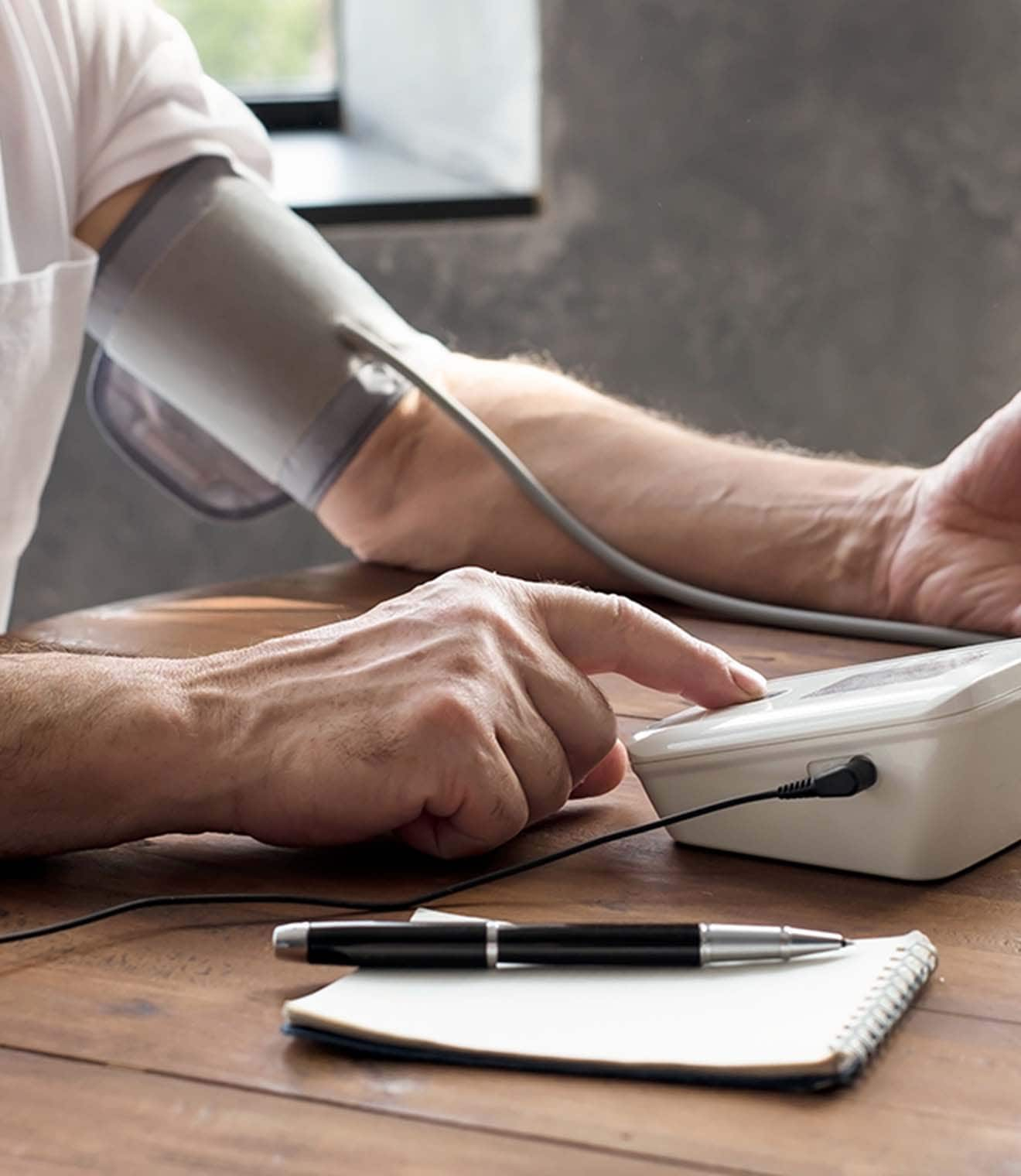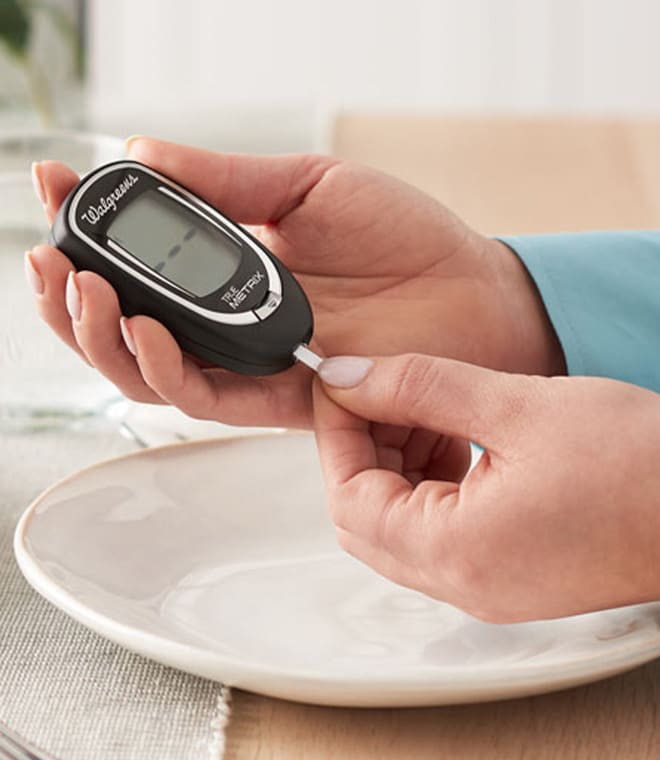Health
Gestational diabetes: Causes, risk factors & treatments
By Jenilee Matz, MPH Oct 25, 2023 • 9 min
Gestational diabetes is a type of diabetes that affects some women during pregnancy. In diabetes, the body loses its ability to regulate blood glucose (sugar) levels. Too much glucose in the blood can cause health problems for a pregnant woman and her baby. If you're diagnosed with gestational diabetes, it's important to manage your blood glucose levels. Here are more details on gestational diabetes.
What is gestational diabetes?
In gestational diabetes, blood glucose levels rise higher than normal. This could potentially cause your baby to:
- Be born earlier than expected (preterm)
- Weigh 9 pounds or more, which increases the risk of trauma and injury during birth
- Have trouble breathing
- Have hypoglycemia (low blood sugar) right after birth
- Develop jaundice (yellowing of the skin and eyes due to high levels of bilirubin, a substance the body makes when it breaks down old red blood cells)
- Have a higher risk of developing type 2 diabetes or obesity later in life
Gestational diabetes can be risky for moms, too. High blood glucose levels during pregnancy can increase the risk of the following:
- Preeclampsia, a pregnancy condition marked by high blood pressure and too much protein in the urine. Preeclampsia can be life-threatening, and the only cure for it is to give birth. Your baby may need to be delivered early, before they are fully grown.
- Having a large baby. This increases the risk of heavy bleeding after birth, a difficult labor and delivery by cesarean or C-section, which is a major surgery. If you're able to have a vaginal birth, a large baby raises the chance of severe tears in the vagina or the area between the vagina and anus.
- Perinatal or Postpartum depression, which is a condition that causes feelings of sadness that interfere with your daily life.
In most cases, gestational diabetes goes away shortly after the delivery. However, it's important to be checked for diabetes after your baby is born. You will also need to be tested for diabetes every few years. This is because about 50% of women who have gestational diabetes develop type 2 diabetes later in life.
What causes gestational diabetes?
Gestational diabetes occurs when your body can't make enough insulin needed during pregnancy. Insulin, a hormone made in your pancreas, helps your body move glucose from the blood into the cells, where it's used for energy.
Changes to your body during pregnancy, such as weight gain, can make it more difficult for your body to use insulin properly. Most pregnant women can make more insulin to help move glucose from the blood into the cells. Gestational diabetes develops if the pancreas isn't able to produce enough insulin during pregnancy. Without enough insulin, glucose stays in the blood and the levels rise.
Risk factors for gestational diabetes
Gestational diabetes can happen during any pregnancy, but it's more likely in pregnant women who have certain risk factors. The more risk factors you have, the higher your chance of this condition. Gestational diabetes is more likely in women who:
- Are overweight or obese before becoming pregnant
- Gained excess weight during the first part of pregnancy
- Do not exercise
- Had gestational diabetes in a past pregnancy
- Gave birth to a baby who weighed 9 pounds or more
- Have high blood pressure, high cholesterol or high triglyceride levels
- Have certain other medical issues, such as polycystic ovarian syndrome (PCOS), heart disease, prediabetes or metabolic syndrome
- Have a family history of diabetes
- Are African American, Hispanic, Asian American, Native American or Pacific Islander
- Are pregnant with more than one baby
How common is gestational diabetes?
The Centers for Disease Control and Prevention (CDC) estimates that gestational diabetes affects 2% to 10% of pregnancies in the United States each year.
Gestational diabetes symptoms
Gestational diabetes doesn't tend to cause symptoms. Some women may have mild signs of gestational diabetes, such as feeling thirstier or urinating more often than normal.
Gestational diabetes testing and diagnosis
All pregnant women should be checked for gestational diabetes. Your healthcare provider will likely test you between weeks 24–28 of pregnancy. However, if you have certain risk factors, you may be tested earlier in pregnancy. Gestational diabetes is diagnosed with blood tests. Your healthcare provider may test you using these methods:
- Glucose Challenge Screening: No preparation or fasting is needed for this test. You’ll be asked to drink a sweet liquid (glucose) and then have your blood sugar levels checked after one hour. If your blood sugar levels are considered high, your healthcare provider will likely order an oral glucose test for diagnosing possible gestational diabetes.
- Glucose Tolerance Test: You’ll need to fast for this test and it takes a few hours to complete. It is typically done in multiple steps to confirm a diagnosis. First, your healthcare provider will draw blood before the test. Then, you’ll drink a liquid that contains glucose and then have blood draws one hour, two hours and three hours after drinking the liquid. Blood glucose results are considered high if:
- Fasting: 95 mg/dL or higher
- One hour: 180 mg/dL or higher
- Two hours: 155 mg/dL or higher
- Three hours: 140 mg/dL or higher
This test can confirm a diagnosis of gestational diabetes.
Gestational diabetes treatment
If you are diagnosed with gestational diabetes, your healthcare provider will likely recommend that you follow a treatment plan to bring your blood glucose levels to a healthy range. Following your care plan is a must because it can improve your chance of having a healthy pregnancy and baby. Treatment may involve the following:
- Testing your blood sugar at home. Your healthcare provider will let you know what your target blood glucose range is and how often to check your blood sugar.
- Following a gestational diabetes diet. Your provider may suggest you work with a registered dietitian who can create a healthy eating plan for you. They can also teach you how to eat the right amount of food at the right times.
- Being physically active. Moderate-intensity aerobic exercise, such as brisk walking, can help reduce blood glucose levels. Ask your provider which exercises are safe for you and if there are any special precautions you should take.
- Keeping up with checkups. See your healthcare provider as often as directed. They'll monitor your health and your baby's development.
- Taking medications as directed. If a healthy eating plan and regular exercise aren't enough to manage your blood glucose levels, you may need insulin injections. In some cases, your healthcare provider may prescribe a different diabetes medicine to be taken by mouth.
When blood glucose levels are too high, gestational diabetes can lead to health consequences for both moms and babies. Know that there are ways to help you reach your target blood glucose levels and reduce your risk of problems. You also may need to continue follow up visits with your healthcare provider after delivery in order to make sure your blood glucose remains in normal range. Work closely with your healthcare provider and follow your treatment plan to improve your chances of having a healthy pregnancy and to protect the health of your baby.
Clinically reviewed and updated by Julie McDaniel, MSN, RN, CRNI, October 2023.
Sources
- https://www.cdc.gov/diabetes/basics/gestational.html
- https://www.acog.org/Patients/FAQs/Gestational-Diabetes?IsMobileSet=false
- https://www.uptodate.com/contents/diabetes-mellitus-in-pregnancy-screening-and-diagnosis
- https://care.diabetesjournals.org/content/43/Supplement_1/S14
- https://www.marchofdimes.org/find-support/topics/pregnancy/gestational-diabetes
- https://www.mayoclinic.org/diseases-conditions/gestational-diabetes/symptoms-causes/syc-20355339
- https://www.acog.org/womens-health/faqs/multiple-pregnancy
- https://americanpregnancy.org/healthy-pregnancy/pregnancy-health-wellness/glucose-tolerence-test/
- https://my.clevelandclinic.org/health/diseases/9012-gestational-diabetes



